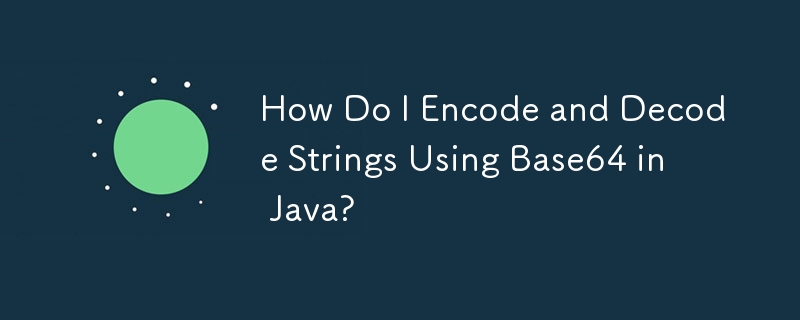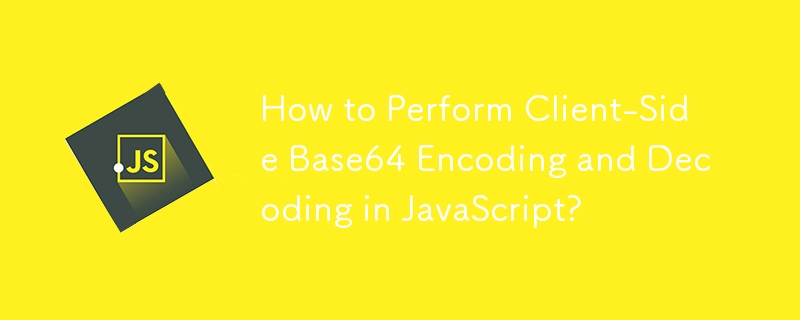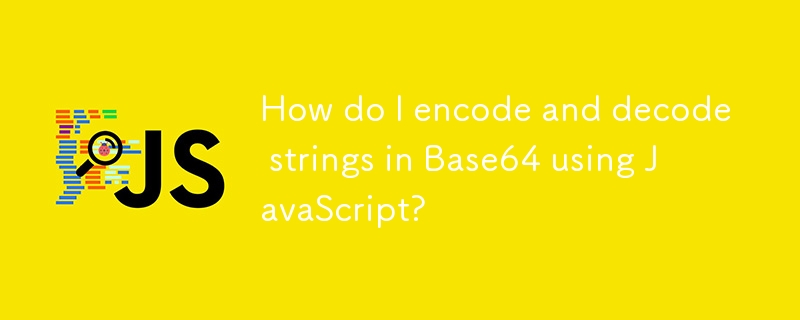Found a total of 10000 related content

How to encode a string to Base64 in Java?
Article Introduction:Import the java.util.Base64 class; 2. Use Base64.getEncoder().encodeToString() to convert the string to Base64 encoding. You must first convert the string into a byte array with UTF-8 encoding; 3. Optionally use Base64.getDecoder().decode() to decode the Base64 string to the original string, and then construct the original string with UTF-8; 4. For URL security scenarios, you can use Base64.getUrlEncoder(). This method is a standard, safe and efficient Base64 processing method in Java 8 and above, and the complete implementation includes encoding and decoding steps
2025-08-02
comment 0
620
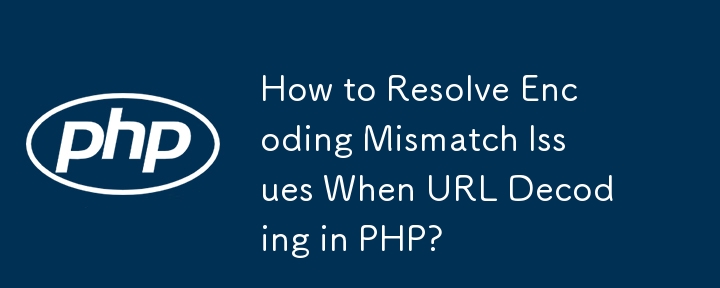
How to Resolve Encoding Mismatch Issues When URL Decoding in PHP?
Article Introduction:URL Decoding in PHP: Encoding Mismatch IssueWhen working with URL-encoded strings in PHP, there are occasional hiccups related to encoding conflicts. One such case arises when decoding a URL string that has both URL encoding and UTF-8 encoding.Consid
2024-10-17
comment 0
734
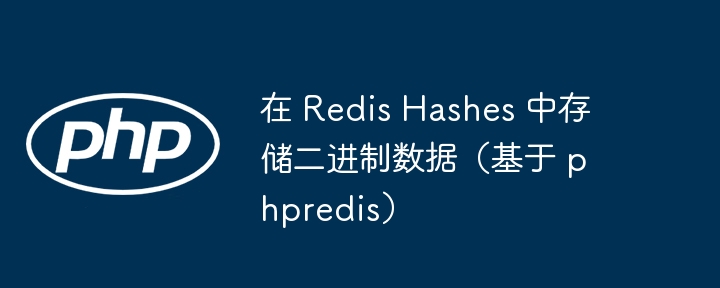
Store binary data in Redis Hashes (based on phpredis)
Article Introduction:This document explains how to safely store binary data in Redis Hashes, highlights the feature that Redis is binary-safe, and explains how this feature extends to the Hashes data type. By understanding Redis’s underlying data structure, you can safely store and retrieve any type of binary data in Hashes without additional encoding or decoding operations, such as Base64 encoding.
2025-09-04
comment 0
1025
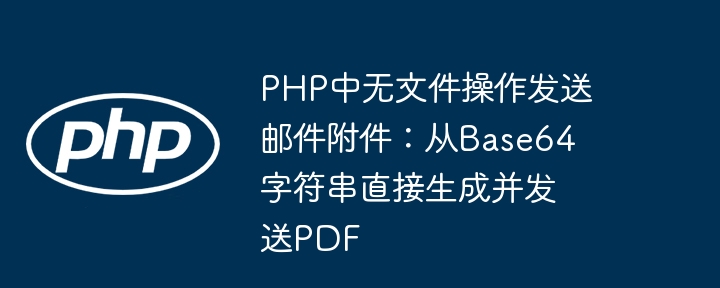
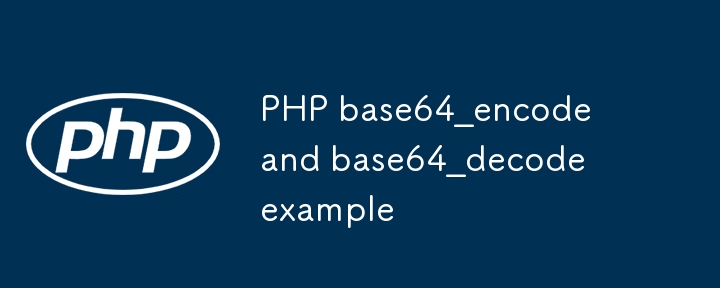
PHP base64_encode and base64_decode example
Article Introduction:Base64 encoding is used in PHP to convert binary data into string format for easy transmission or storage. 1. The base64_encode() function is often used to process the transmission of images, file contents or special characters, such as embedding PNG icons into HTML dataURI to display; 2. The base64_decode() function is used to restore encoded data, such as decoding user information in the API interface; 3. Note when using: Base64 encoding will increase the data volume by about 33%, and cannot be used to encrypt sensitive information. Ulencode processing should be performed when used in URLs or cookies, and the received data needs to be formatted verification to avoid decoding failure.
2025-07-12
comment 0
669

How to Convert Data-URIs from JavaScript into Files in PHP?
Article Introduction:This article tackles the issue of converting data-URIs retrieved from JavaScript into file formats using PHP. Addressing the mismatch in encoding that leads to corrupted images, it provides a solution involving replacing spaces with ' ' and decoding
2024-10-23
comment 0
767

PHP: Optimize email attachment sending and database storage, say goodbye to temporary file troubles
Article Introduction:This article aims to explore how to avoid creating and managing temporary files when handling email attachment sending and database storage in PHP. By processing data in memory, directly performing Base64 encoding, decoding, and adding mail attachments, as well as database storage, it can significantly improve system performance, security and simplify code logic, thereby achieving a more efficient and secure file-free operation process.
2025-08-25
comment 0
283
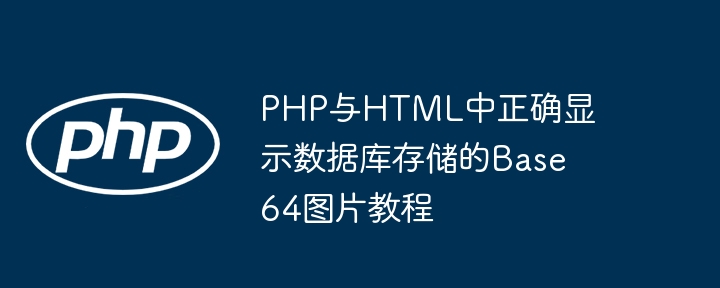
Base64 picture tutorial for correctly displaying database storage in PHP and HTML
Article Introduction:This tutorial aims to solve the common problem encountered when retrieving and displaying Base64 encoded images from a MySQL database using PHP and HTML, that is, the images cannot load properly. The core content is to understand the correct format of Base64 images in the HTML tag src attribute, and how to accurately extract and directly output the complete Base64 data string from the database, avoid unnecessary encoding or string operations, and ensure that the image can be correctly parsed and displayed by the browser.
2025-08-31
comment 0
346

What is the use of the << operator in PHP?
Article Introduction:In PHP, implementing polymorphism can be achieved through method rewriting, interfaces, and type prompts. 1) Method rewriting: Subclasses override parent class methods and perform different behaviors according to object type. 2) Interface: The class implements multiple interfaces to realize polymorphism. 3) Type prompt: Ensure that the function parameters are specific to the type and achieve polymorphism.
2025-05-20
comment 0
1135
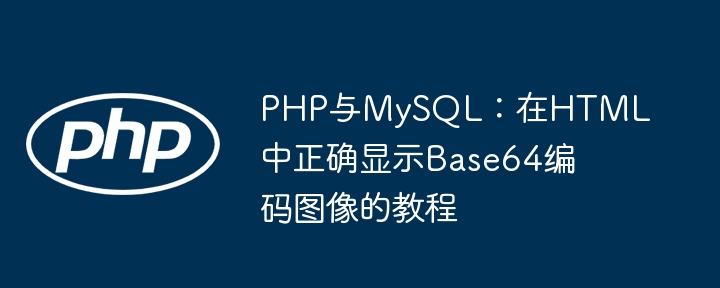
PHP and MySQL: Tutorial for correctly displaying Base64 encoded images in HTML
Article Introduction:This tutorial details how to use PHP to retrieve and correctly display Base64-encoded images from a MySQL database. The article will correct normal errors such as unnecessary quadratic encoding and incorrect array access, and provide clear code examples and practical suggestions to ensure that the image is rendered seamlessly on the web page.
2025-08-31
comment 0
529
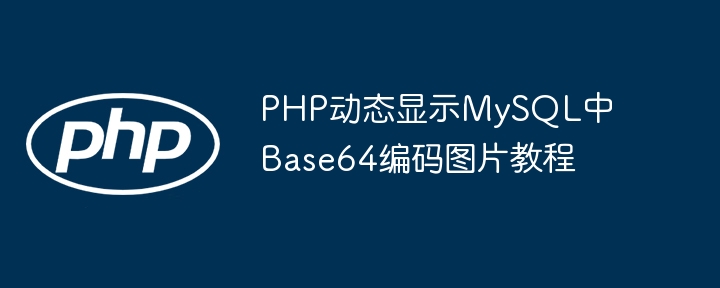
PHP dynamically displaying Base64 encoding picture tutorial in MySQL
Article Introduction:This tutorial explains in detail how to use PHP to retrieve and dynamically display Base64-encoded pictures from a MySQL database. The core is to ensure that the database stores a complete Data URI format string and output it directly into the src attribute of HTML tags through PHP, avoiding unnecessary secondary encoding and string processing, thereby effectively solving the problem that the image cannot be displayed normally.
2025-09-01
comment 0
509

PHP Integration EnableX.io SMS API: Authentication Configuration and Best Practices
Article Introduction:This article aims to solve the authentication failure problem encountered when PHP integrates the EnableX.io SMS API. The core lies in correctly configuring the Authorization field in the HTTP request header. The tutorial will explain in detail how to use APP_ID and APP_KEY for Base64 encoding and use it as Basic authentication credentials to ensure that the API request is successfully authenticated, thereby achieving normal sending of SMS.
2025-08-17
comment 0
530

Optimize AJAX data transmission: Correctly parse arrays and complex data structures in PHP
Article Introduction:When sending complex data to the PHP backend via AJAX, passing the URL-encoded array string as a subfield may cause the server to not be able to automatically parse into an array. This article will explore this common problem in depth and provide two solutions: one is to use PHP's built-in parse_str() function for server-side parsing, and the other is to recommend the use of more general client JSON encoding and server-side json_decode() decoding methods to ensure that the data structure is complete and easy to process.
2025-08-29
comment 0
931

How do you implement custom session handling in PHP?
Article Introduction:Implementing custom session processing in PHP can be done by implementing the SessionHandlerInterface interface. The specific steps include: 1) Creating a class that implements SessionHandlerInterface, such as CustomSessionHandler; 2) Rewriting methods in the interface (such as open, close, read, write, destroy, gc) to define the life cycle and storage method of session data; 3) Register a custom session processor in a PHP script and start the session. This allows data to be stored in media such as MySQL and Redis to improve performance, security and scalability.
2025-04-24
comment 0
736

Mastering Number Systems: Advanced Base Conversion Techniques in PHP
Article Introduction:To improve the binary conversion capabilities in PHP, you must first implement custom binary conversion functions to support more than 36% of the digits and custom character sets. 1. Use toBase and fromBase functions combined with custom digits arrays to realize arbitrary binary conversion; 2. When processing large numbers, you should use the bccomp, bcmod and bcdiv functions extended by BCMath to ensure accuracy; 3. Build the BaseEncoder class to implement bidirectional security mapping to ensure reversible encoding and decoding; 4. Always verify the input and unify the character order; 5. Avoid using base_convert to handle large numbers, and prioritize GMP to improve performance, and ultimately realize a robust and extensible binary conversion system.
2025-07-30
comment 0
392

What are interfaces in PHP?
Article Introduction:Interfaces are used in PHP to define contracts that classes must follow, specifying methods that classes must implement, but do not provide specific implementations. This ensures consistency between different classes and facilitates modular, loosely coupled code. 1. The interface is similar to a blueprint, which specifies what methods should be used for a class but does not involve internal logic. 2. The class that implements the interface must contain all methods in the interface, otherwise an error will be reported. 3. Interfaces facilitate structural consistency, decoupling, testability and team collaboration across unrelated classes. 4. Using an interface is divided into two steps: first define it and then implement it in the class. 5. Classes can implement multiple interfaces at the same time. 6. The interface can have constants but not attributes. PHP7.4 supports type attributes but is not declared in the interface. PHP8.0 supports named parameters to improve readability.
2025-06-23
comment 0
331

How do I develop my own Composer plugin?
Article Introduction:To start building a custom Composer plugin, first understand its basic structure and how it works. 1. Understand the basics of Composer plug-in: Plugin is a PHP package that implements Composer\Plugin\PluginInterface, which can hook internal events of Composer; key components include plug-in classes, event listeners and commands. 2. Set the plug-in structure: Create a project containing the src directory and composer.json, define PSR-4 automatic loading and specify the plug-in class. 3. Hook events or add commands: register event listeners through the activate() method or implement CommandProviderInterface to introduce CLI commands
2025-07-22
comment 0
926
